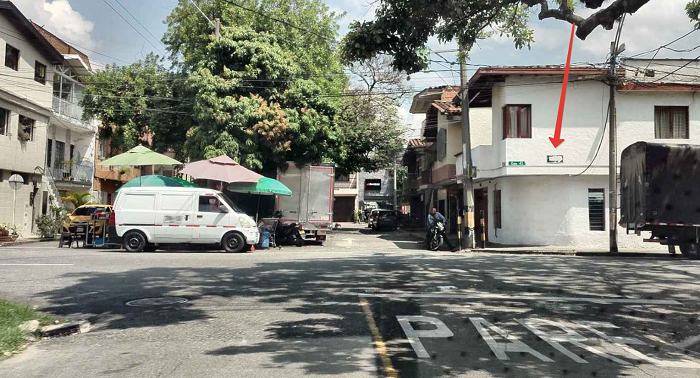4.10. Mapping rules: Colombia
This section contains mapping rules for Colombia.
4.10.1. Administrative divisions borders
For level 7 administrative units (Blocks), the parent should be the administrative division with the smallest area that completely encompasses the block (except for divisions of the Named territory type).
4.10.2. Roads
4.10.2.1
-
Streets are linked to any division of level 7 (Block) or higher that completely encompasses them (except for "Named territory" divisions).
You can also link streets directly to municipalities that fully encompass them, though it's preferable to link them to administrative divisions of lower levels.
4.10.2.2
-
Some cities have long avenues with two names: one includes a street number, while the other does not. For example, Avenida Carrera 30 and Avenida Ciudad de Quito.
If such streets overlap completely, use the name of the street with the number as the official name, and the name without the number as a synonym. For example, the official name is Avenida Carrera 30, the synonym is Avenida Ciudad de Quito.
If several streets with numbers in their names overlap with a street without a number, create a separate
Street in locality
for each numbered street (for example, Avenida Calle 56A Sur, Transversal 60, and Avenida Carrera 72). For the street without a number, create a separate road with the typeArterial road
(for example, Avenida Boyacá).
4.10.2.3
- One-way traffic is assigned to class 7 roads if there are road signs on the ground that restrict entry or turns to this road from one of the sides.
4.10.2.4
-
One-way traffic signs can also be placed on building facades, in addition to standard placement options. For example:

4.10.3. Addresses
4.10.3.1
-
Double
numbers are written with a hyphen, without spaces. For example:91-23
.If an address contains additional letters or words after the first number (including cardinal directions), abbreviate those letters or words to the first capital letter of each word, without spaces.
For example, shorten
76 Norte — 15
to76N-15
and23С Norte — 81
to23CN-81
.
4.10.3.2
-
Abbreviations that you should use in the address:
-
Interior →
IN
; -
Local →
LC
; -
Casa →
CA
; -
Torre →
TO
; -
Lote →
LT
.
For example, 11-12/IN-1.
-
4.10.3.3
-
In some cases, in addition to the building and street number, addresses also contain the street number of the nearest intersection and the distance in meters from that intersection to the building entrance.
If the location of the entrance is known, then place the address point behind this entrance, closer to the edge of the building.